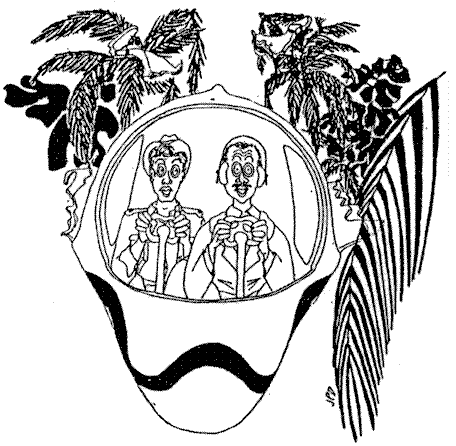Tales of South America-Jim Ray
W.L. (“Steve”) Stevenson
Search and Discovery Article #12002 (1999)
(from The Sumner [Illinois] Press—10/15/92)

The most colorful man I met during my years of oil and gas exploration in South America, was an adventurer and businessman named Jim Ray. This man could have stepped right out of a John Wayne movie. He was approximately 40 years old when we first met in the mid 1970s. My recollection is that his roots were in Kentucky, where his family was in the cattle business.
What brought him to South America initially was never disclosed, but he eventually settled in the business of building roads and other facilities In the jungle and llanos (plains) for various large oil companies. His main office was in Bogota which is Colombia's largest city and is nestled in the Andes Mountains at an elevation of about 9000 feet. At that time Bogota had an active nightlife and he was a regular participant, and was often seen rounding up groups of friends for dinner and nightclub revelry. Despite a reputation as a carouser, he was generous and loyal to his friends and a tough professional in his work.
Jim Ray's specialty was building roads and oil field facilities in remote areas and in the jungle using native labor. Needless to say, this type of work involved incredible logistics and personnel problems.
When he first began operations in Colombia, his main method of transportation was by air and he used the well known twin-engined propeller driven Aero Commander. He and his pilot survived a spectacular crash in the rain forest in one of these planes without suffering a serious injury. The plane impacted into an area of huge trees, and stripped away all of the plane except the cockpit, which settled quietly onto the ground with Ray and his pilot still at the controls, bewildered but unhurt.
This near disaster provided an excuse to arrange for more colorful transportation, which turned out to be two World War II vintage B-26 bombers. After the armament was stripped off, the planes proved to be ideal for his operations despite their gas-guzzling reputation. Although propeller-driven, they were fast and could he landed on the dirt air strips carved out of the jungle. One of our geologists dropped by his jungle camp one day, and Ray greeted him with an invitation for a drink. He expected to sit down in one of the camp tents but instead was escorted to one of the B-26s. They proceeded to fly 150 miles over the Andes Mountains to one of Ray's favorite watering holes for a drink and returned a few hours later.
His work required hiring and controlling teams of tough native laborers to clear roads and airstrips through the jungle. He often told many stories of having to serve as arbiter and straighten out the bloody aftermath of machete fights among crews (A machete is a large wide-bladed knife used in clearing underbrush).
The equipment and machinery for his work was kept in a compound in the city of Bogota. After suffering through a period of recurring thievery of his supplies, he decided to enclose the compound with a high barbed wire topped chain link fence and hire a 24hour guard. The guard came equipped with two large German shepherd dogs, which were the classic junkyard dogs
On one occasion Jim was enjoying the evening at one of his favorite night spots when he received a panic call from one of his crews operating in a remote area. It seems that they were in desperate need of an engine part to continue operations. He tore himself away from his favorite surroundings and went out to the compound. When he arrived, to his disgust, he found the guard gone and he was faced with two vicious dogs that saw him only as fresh meat. Because delay was going to cost him a great deal of money, he waded into the compound with poor judgment and great determination. Amazingly, he succeeded in stomping one of the dogs to death and choking the other to death. The machine part was quickly found and sent out on the first plane and then Jim checked into the nearest hospital. He reported to us that part of the damage he suffered consisted of 20 stitches in his private parts. We all decided that he would make a much better friend than an enemy.
The last time I saw him was at the airport in Iquitos, Peru, in the headwaters of the Amazon River in 1976 when he was trying to bring his B-26 bombers into Peru and was facing much opposition from the Peruvian military. I have no doubt that, with his incredible vigor and courage, he is still operating somewhere in South America.
